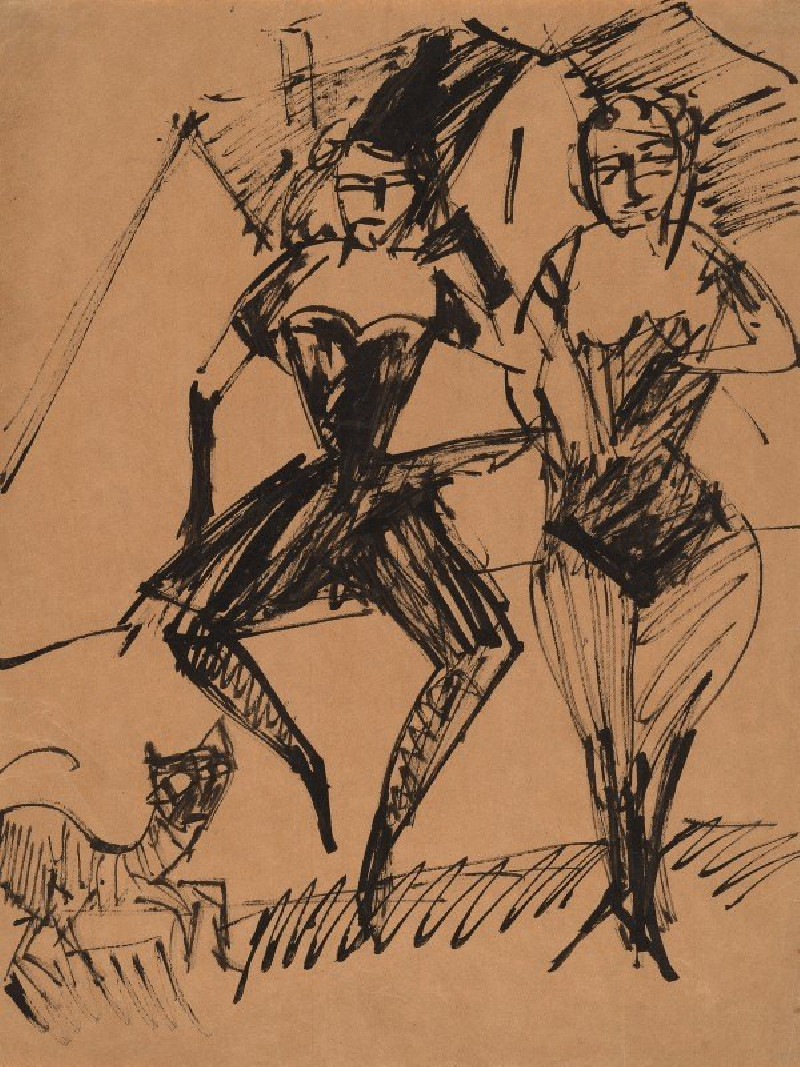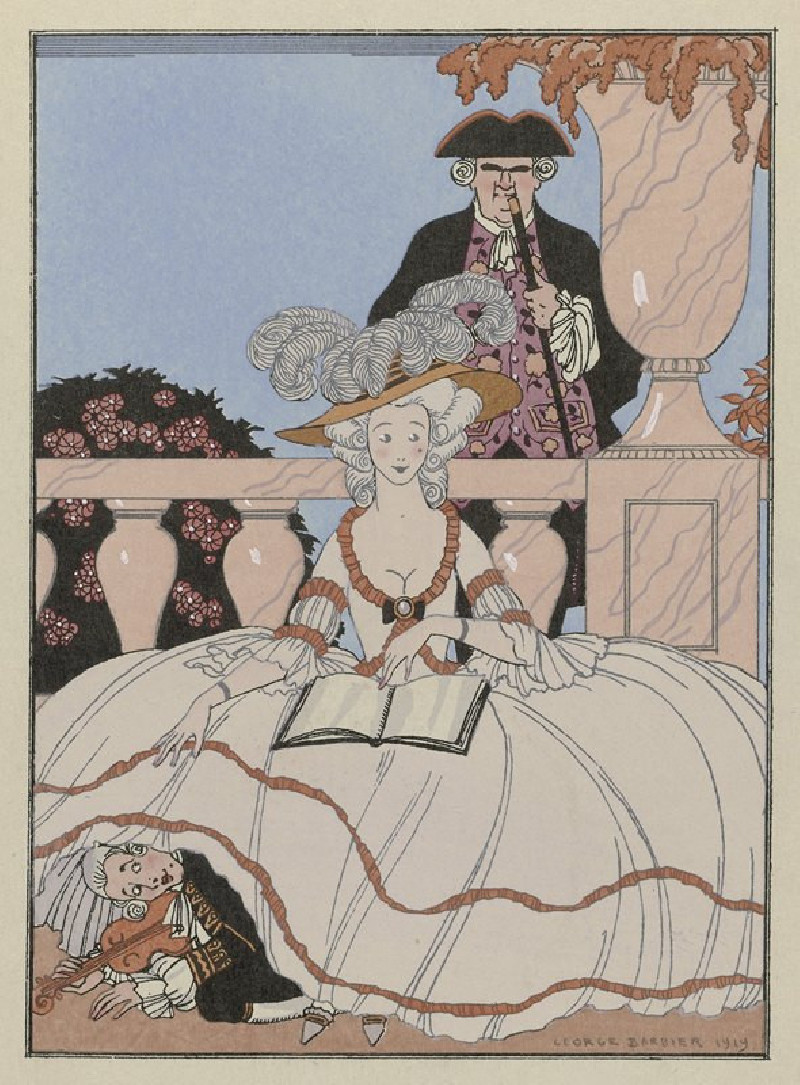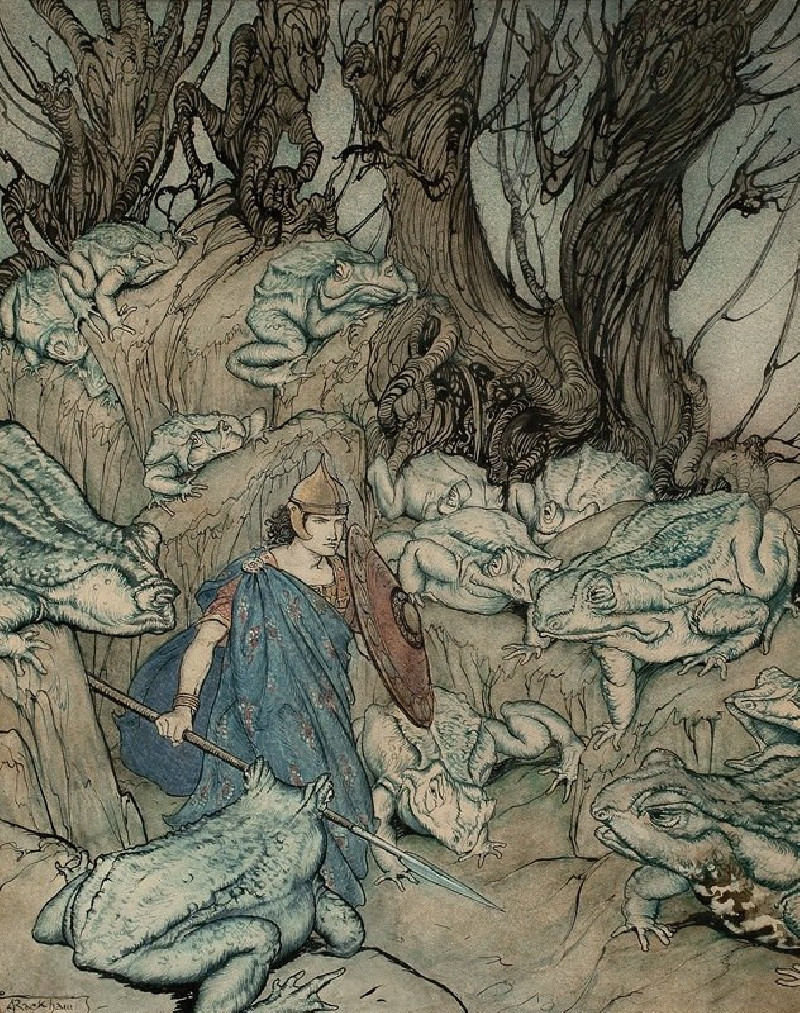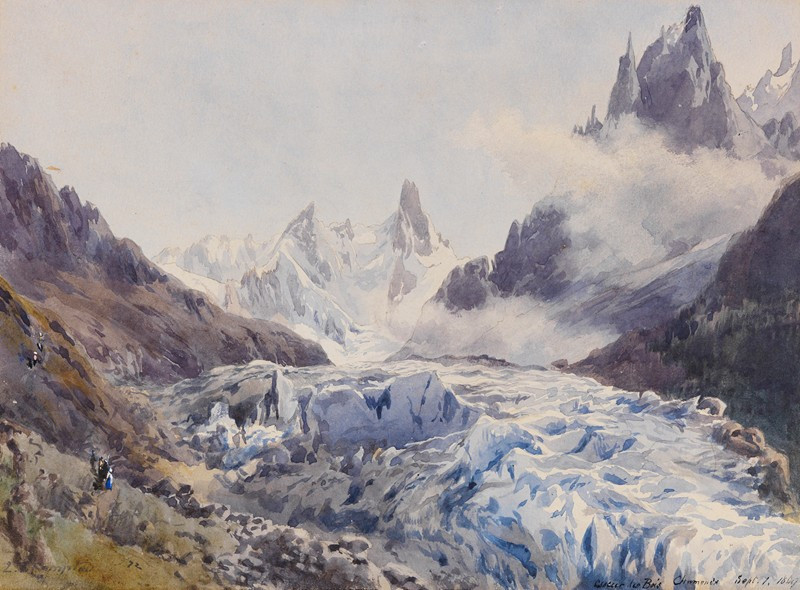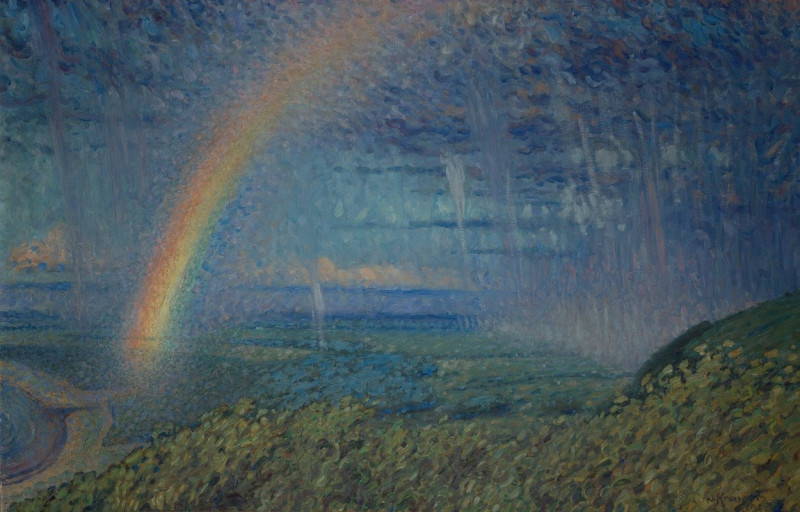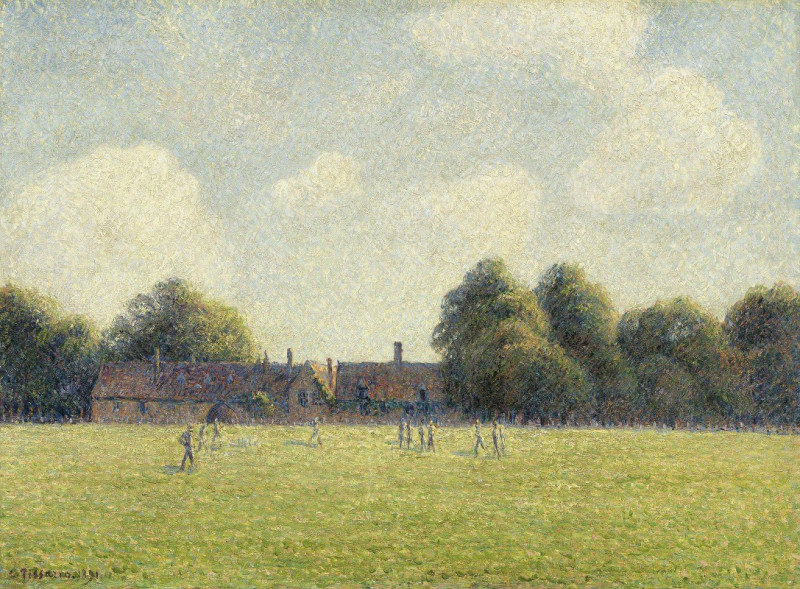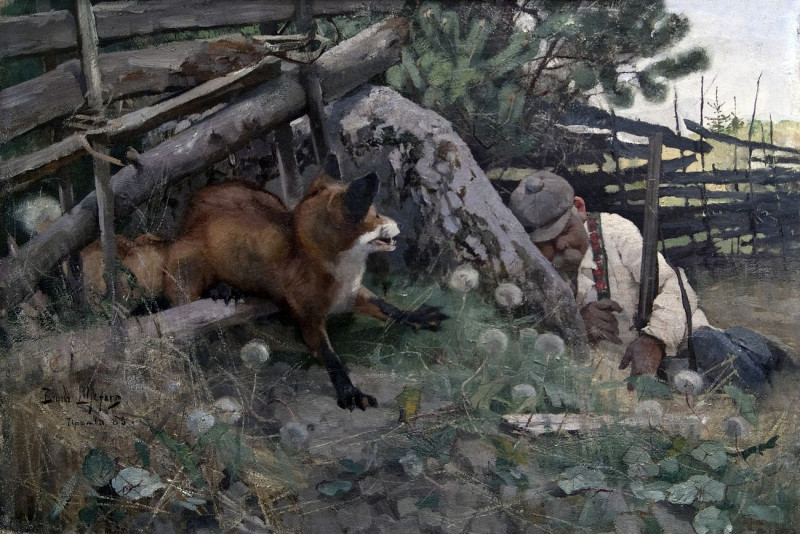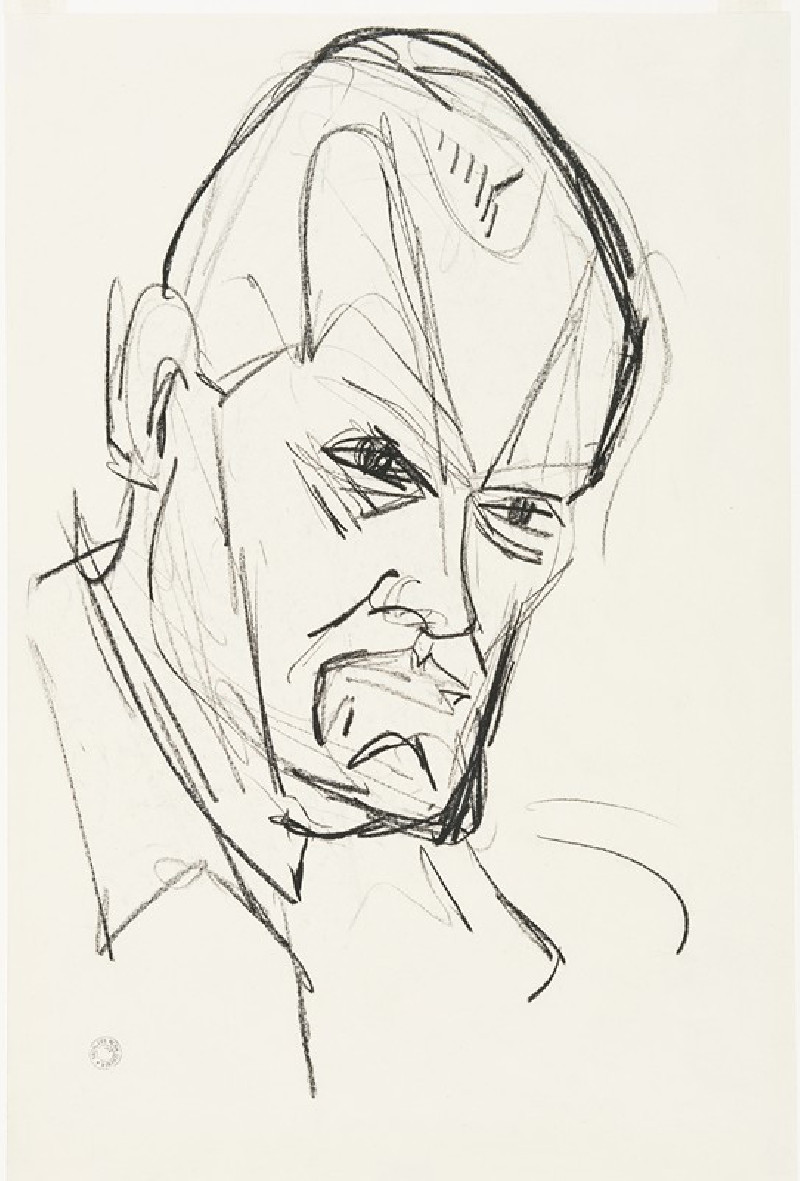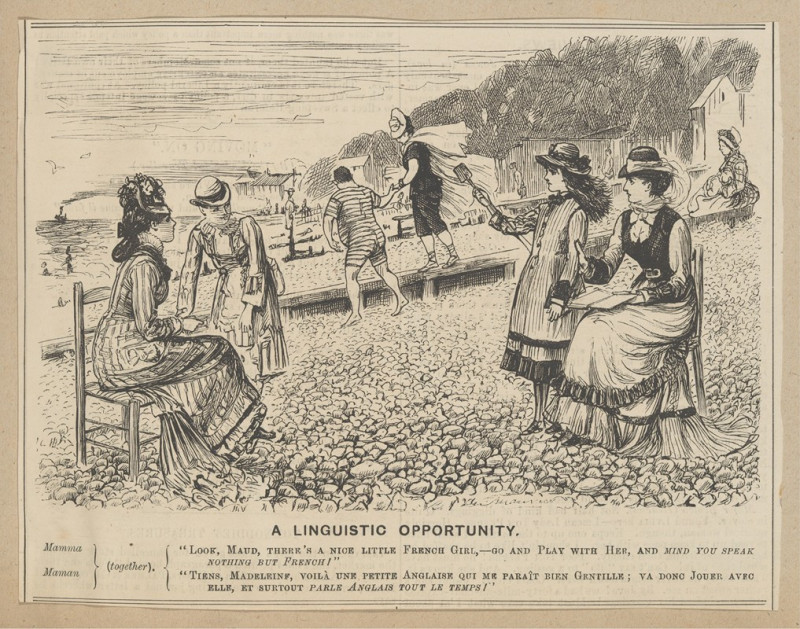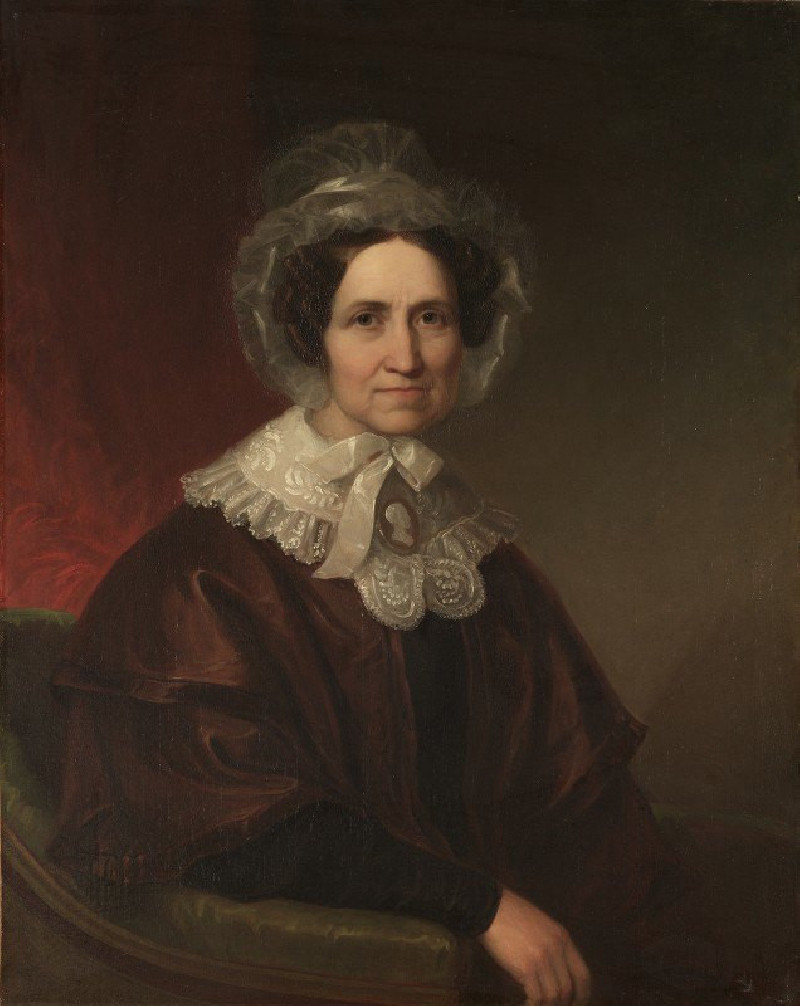Two Dancers with a Cat (1913)
Technique: Giclée quality print
Recommended by our customers
More about this artwork
"Two Dancers with a Cat" (1913) by Ernst Ludwig Kirchner is a compelling expressionist sketch that captures the dynamic movement and stark forms integral to early 20th-century avant-garde art. This sketch, executed in rich black strokes on brown paper, portrays two dancers in mid-performance, their bodies depicted in an abstract, angular style that conveys a sense of rhythm and motion. Accompanying them is a sinewy cat, sketched at the bottom of the composition, its presence adding a playful and somewhat enigmatic element to the scene.Kirchner's use of quick, confident lines suggests not only the physical movements of the dancers but also the artist’s spontaneous reaction to the energy of the performance. The dancers, possibly a reference to the cabaret and vaudeville culture prevalent at the time, are rendered with minimal detail, yet there’s an undeniable intensity in their postures that speaks volumes of Kirchner’s skill in conveying emotion through simplified forms.This artwork is a vivid example of Kirchner’s exploration of expressionism, where the emphasis lies not on realistic portrayal but on emotional and psychological expression. Highlighting themes of performance and modernity, "Two Dancers with a Cat" invites viewers into a world where mundane reality meets creative abstraction.
Delivery
Returns
Ernst Ludwig Kirchner (1880–1938) was one of the most important German Expressionist painters. He was a co-founder of Die Brücke, a group of German expressionist artists formed in Dresden in 1905. Die Brücke and Kirchner took inspiration from Vincent Van Gogh and Edvard Munch, as well as African and Oceanic art. They used woodblock printing as a medium to showcase their signature style: flat, unrealistic images with vivid colors. The recurring themes in Kirchner's artworks included exotic cultures, faraway landscapes, self-portraits, dancers and Berlin street life. His paintings and prints effectively portrayed non-European cultures despite the fact that he never traveled outside of Europe.

